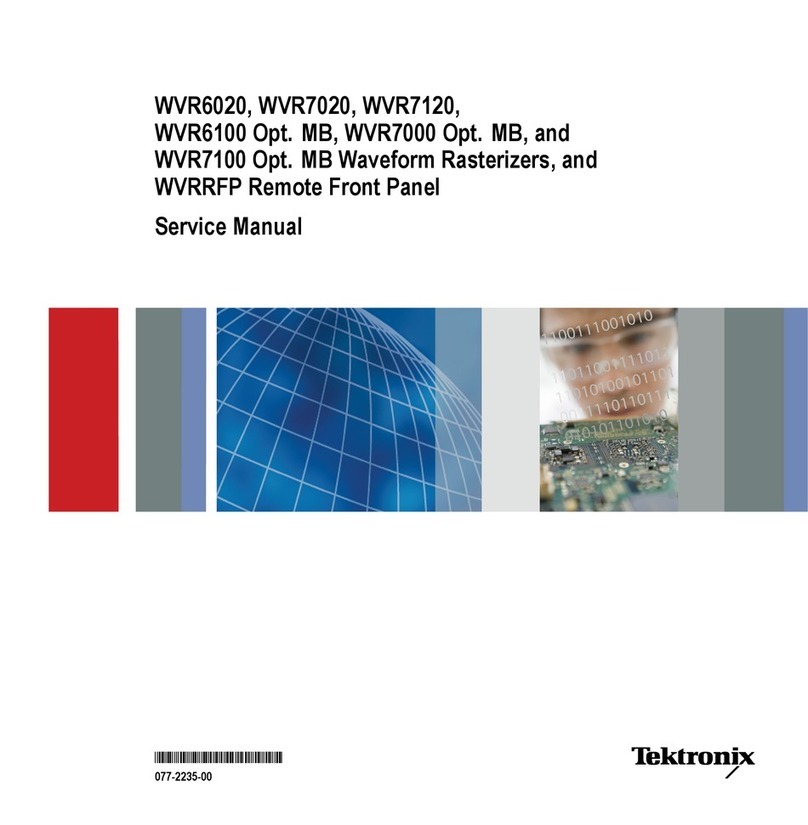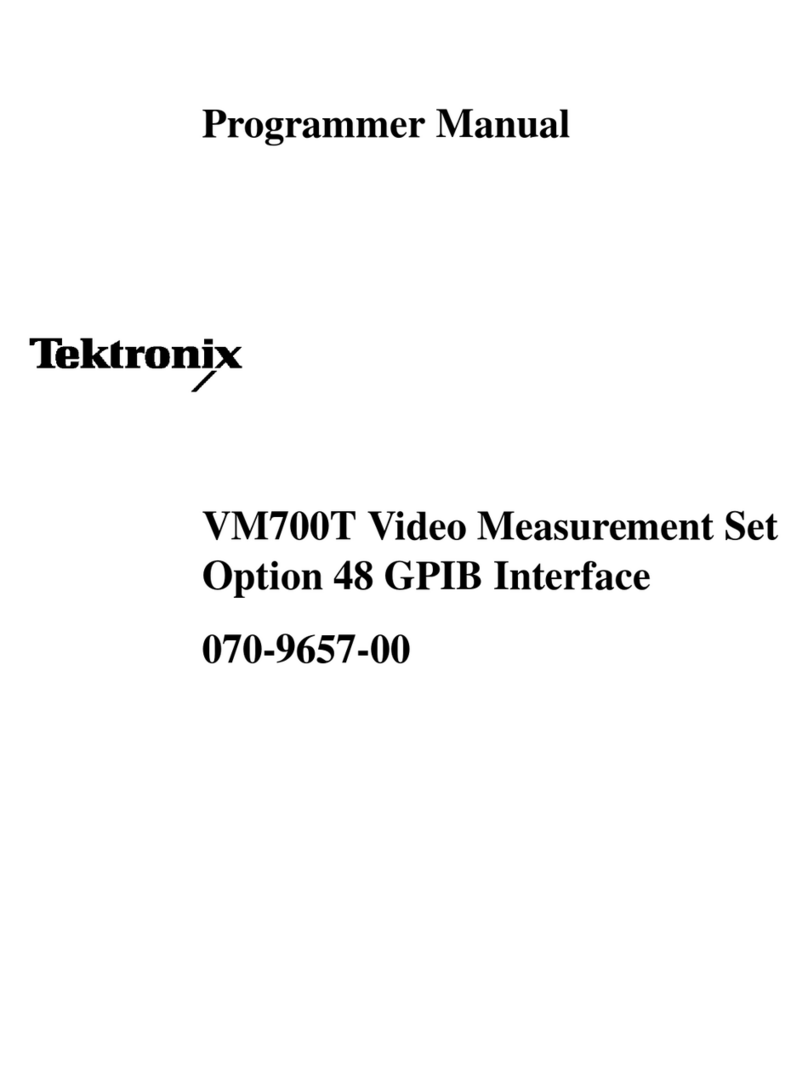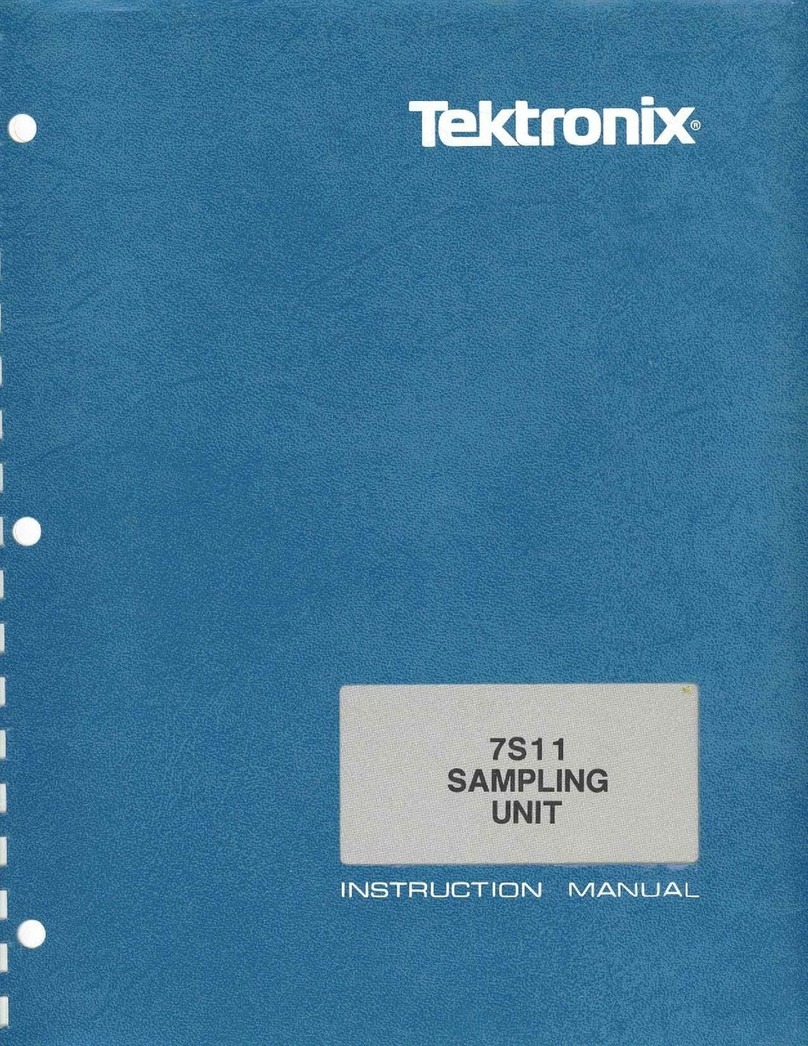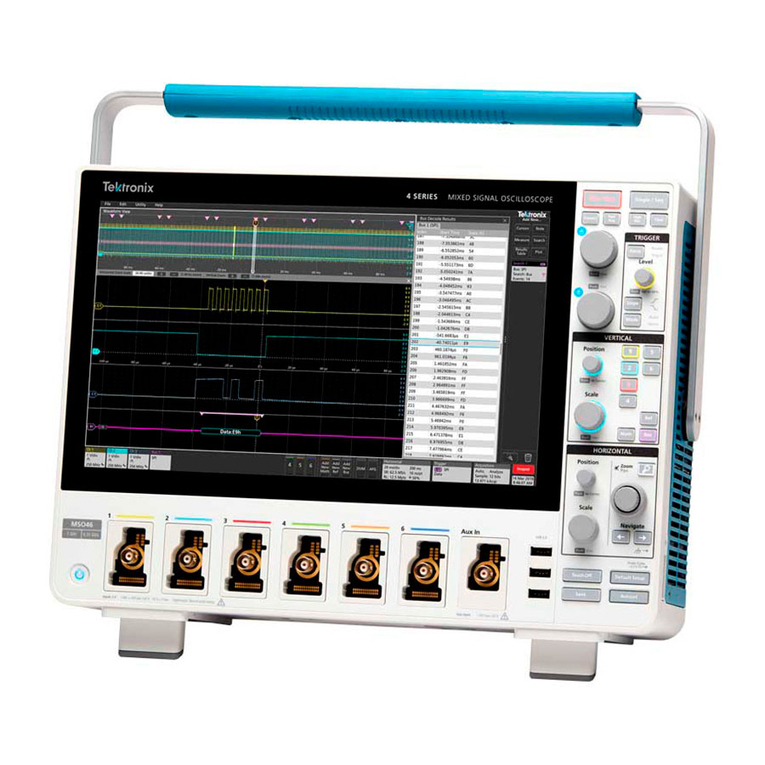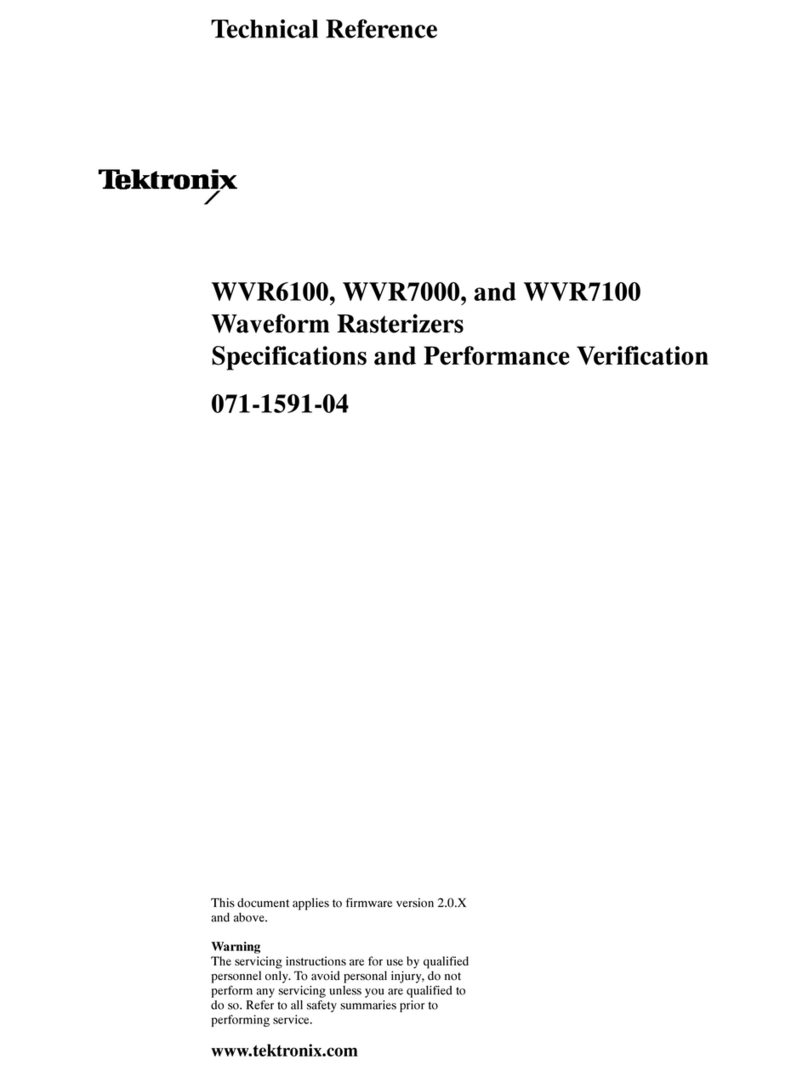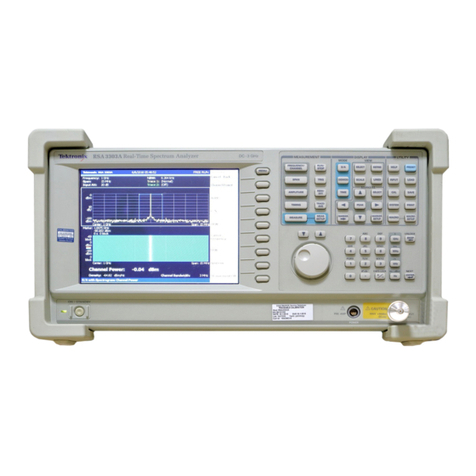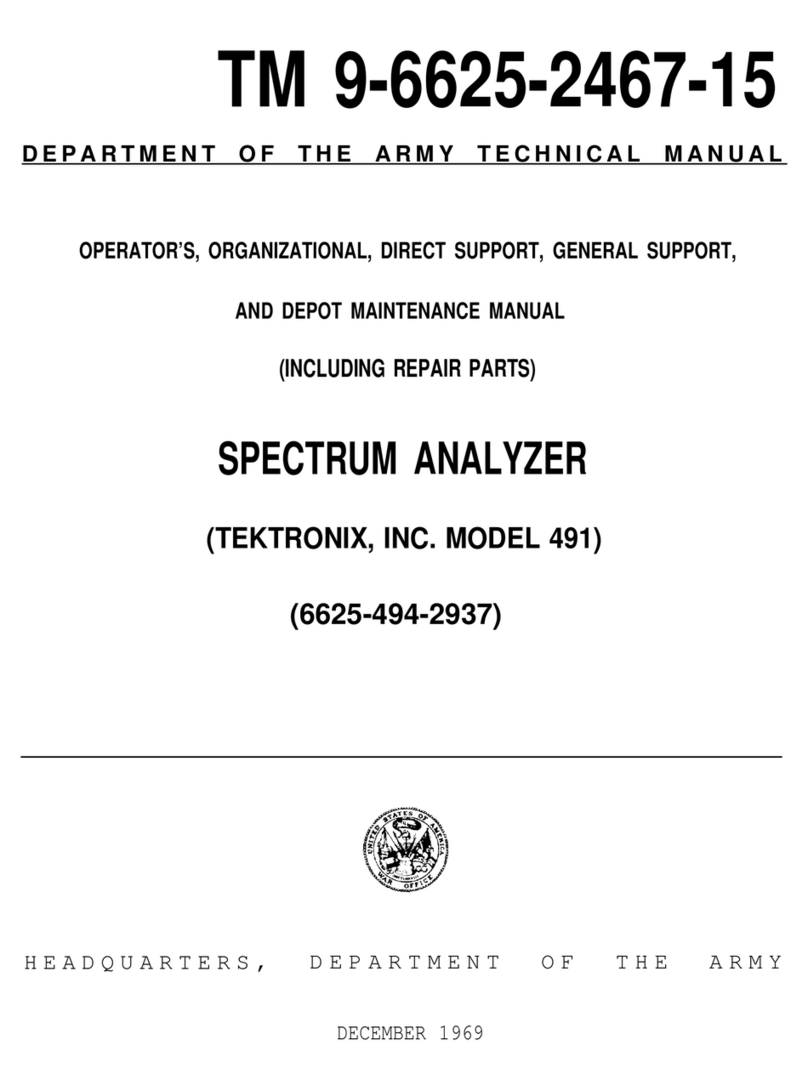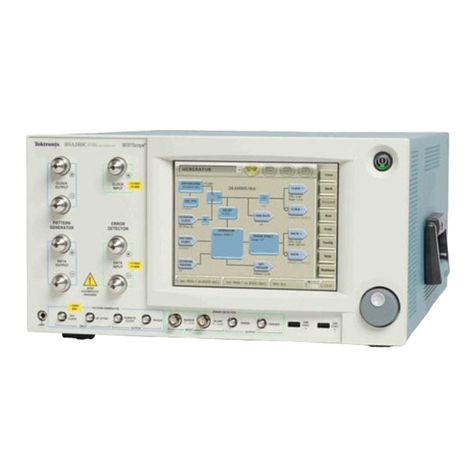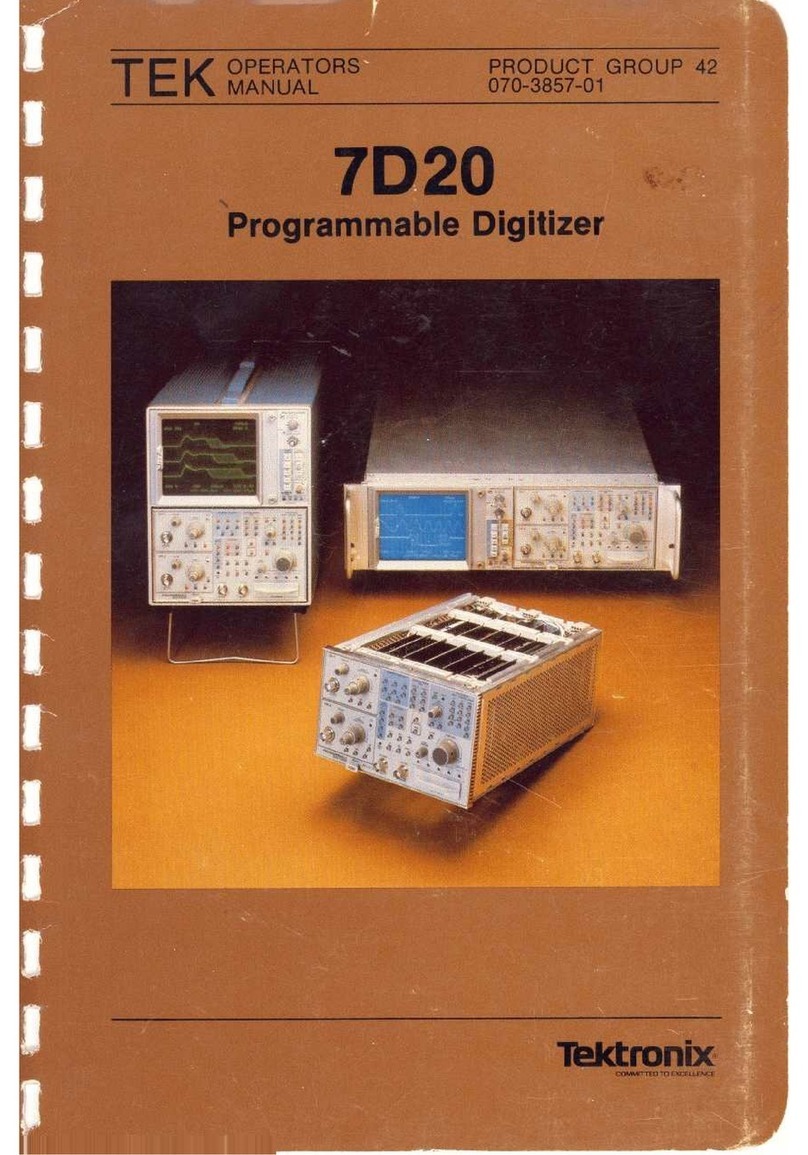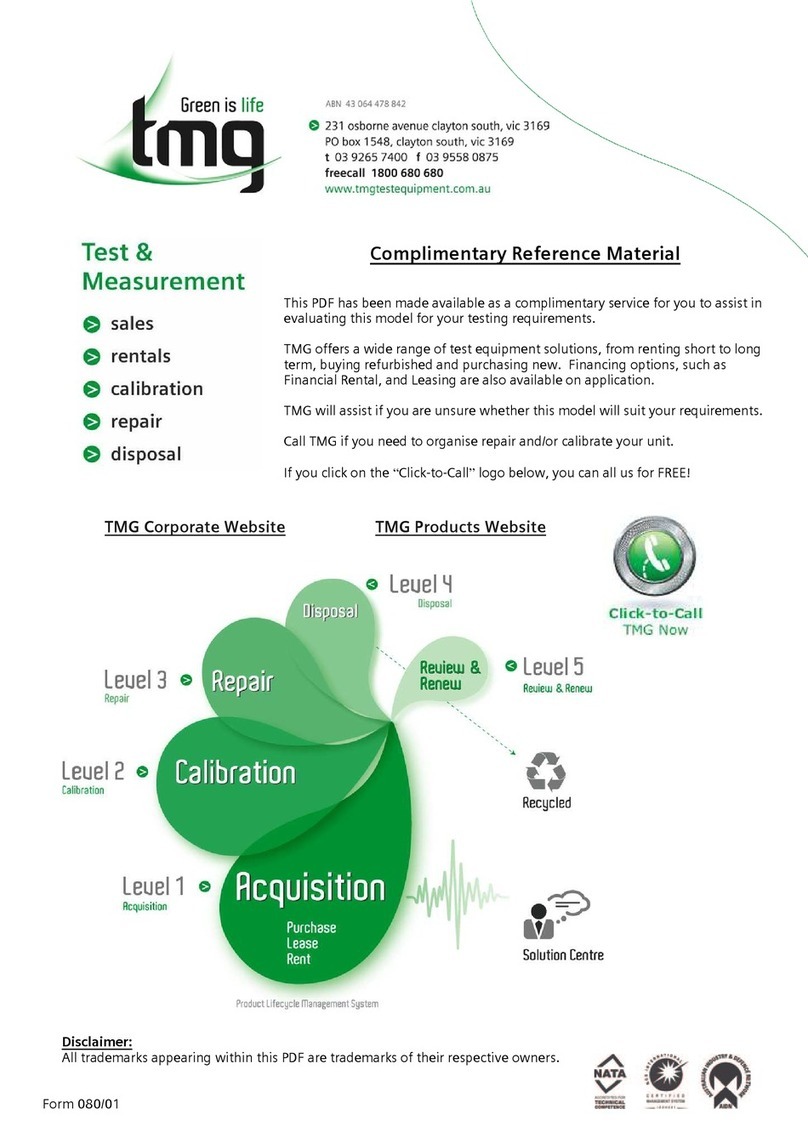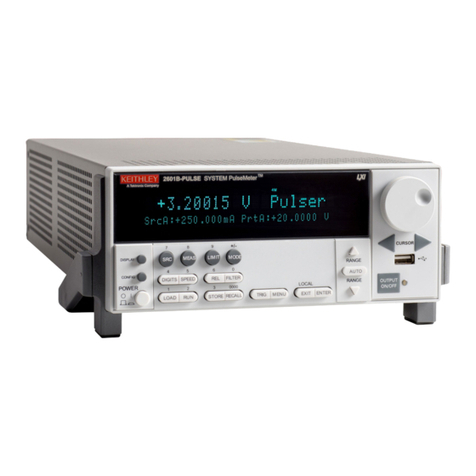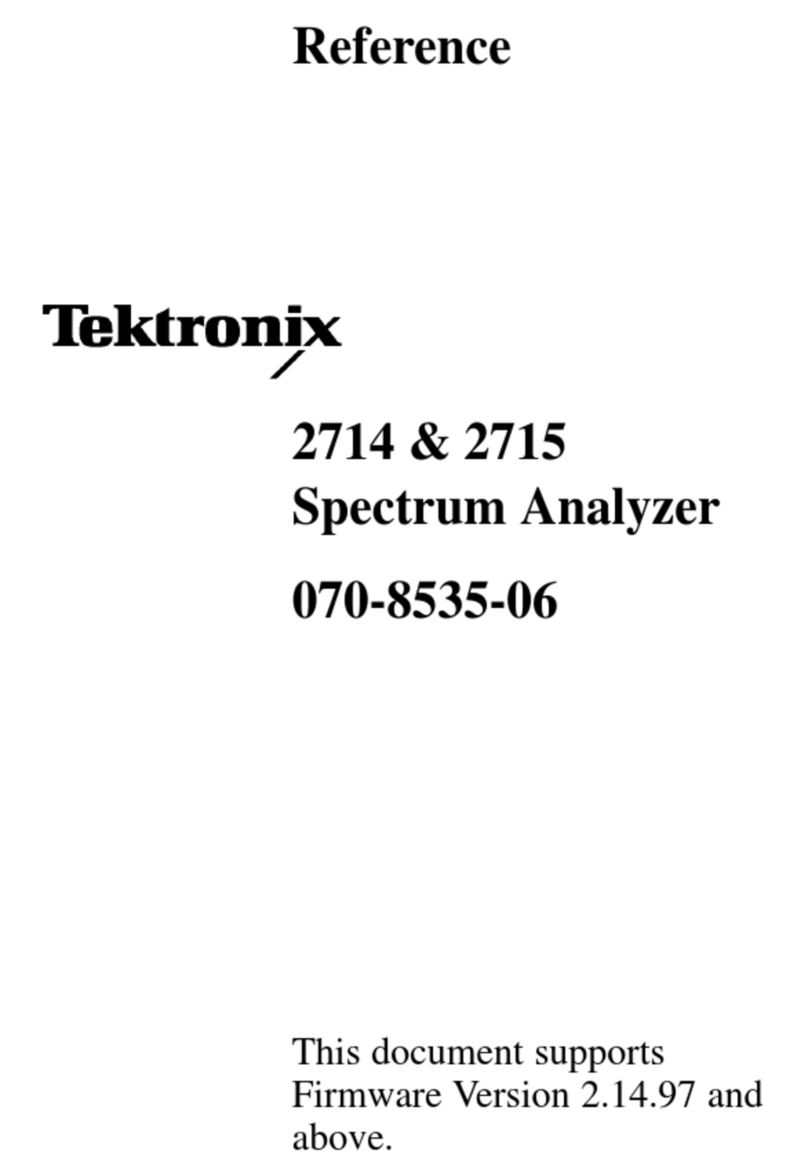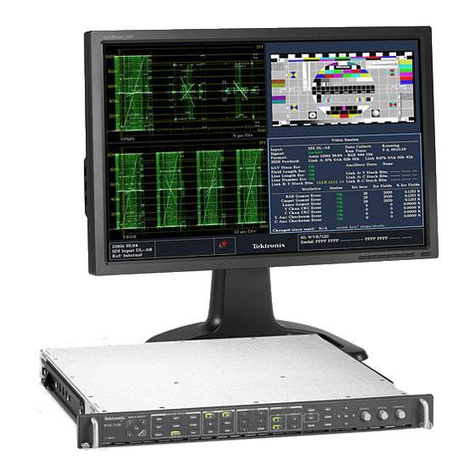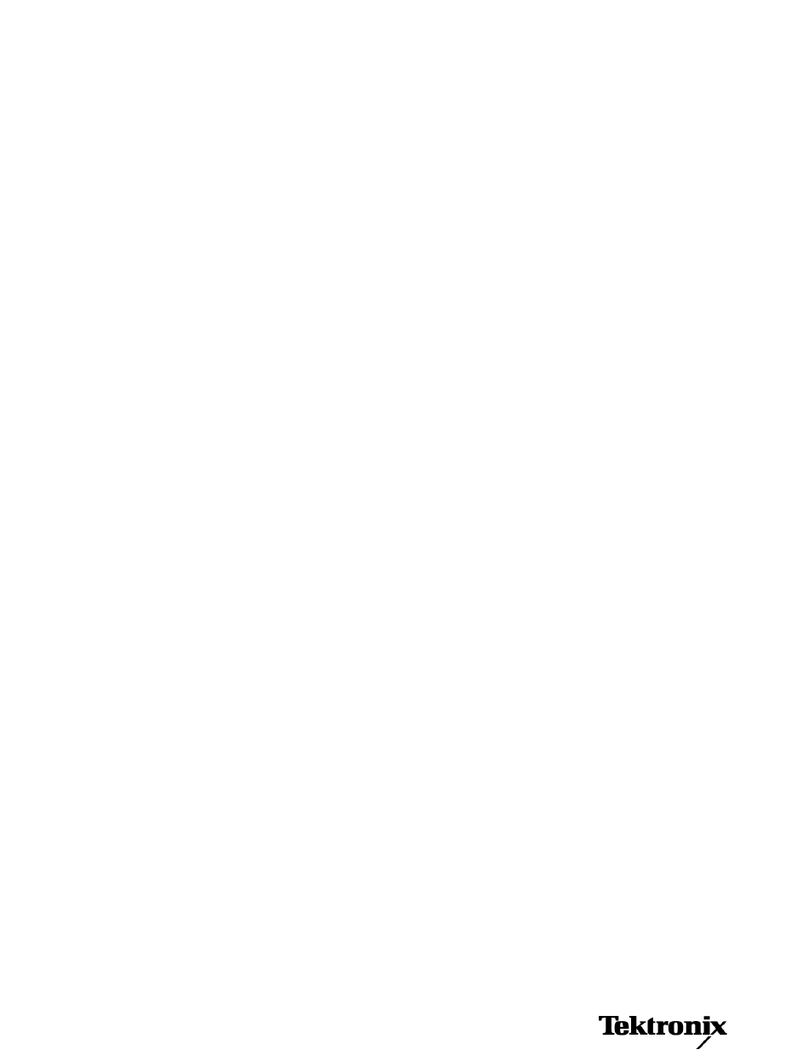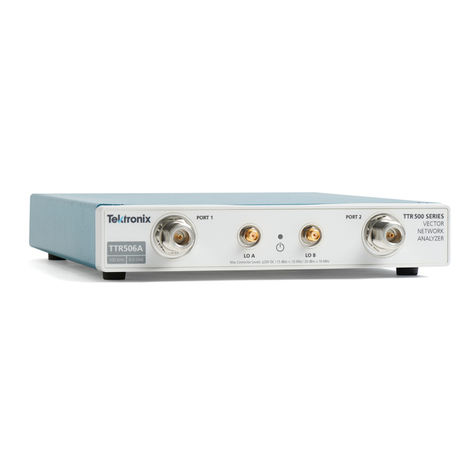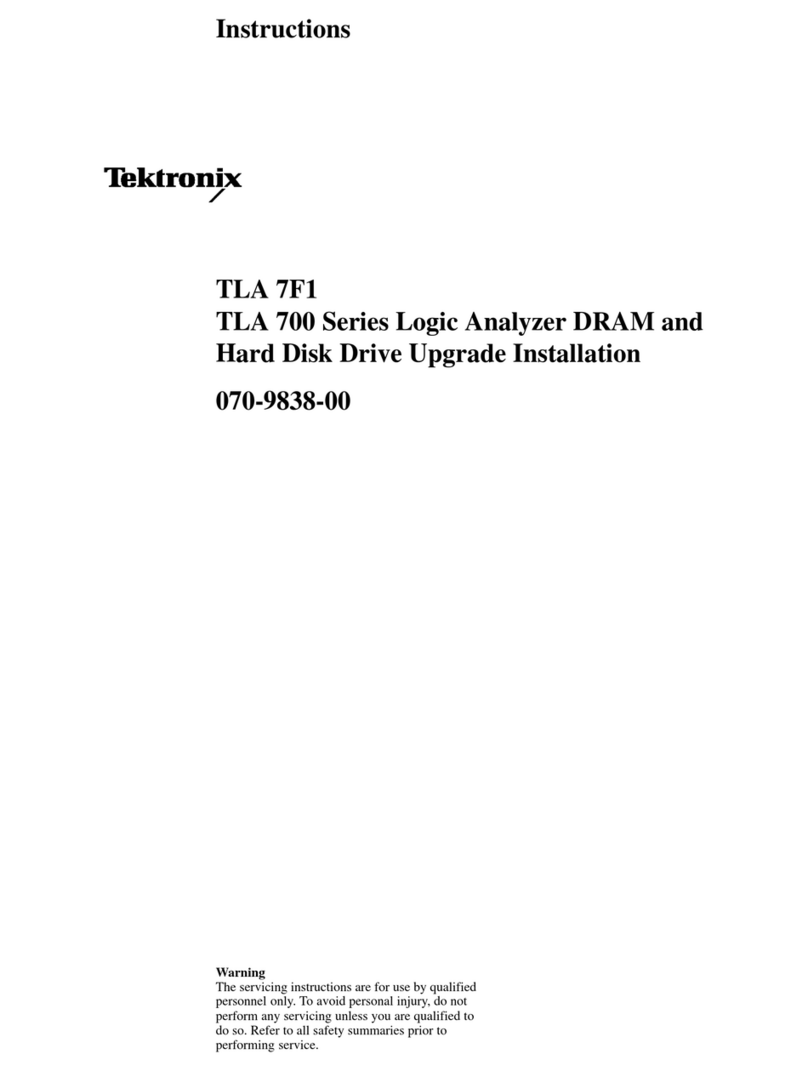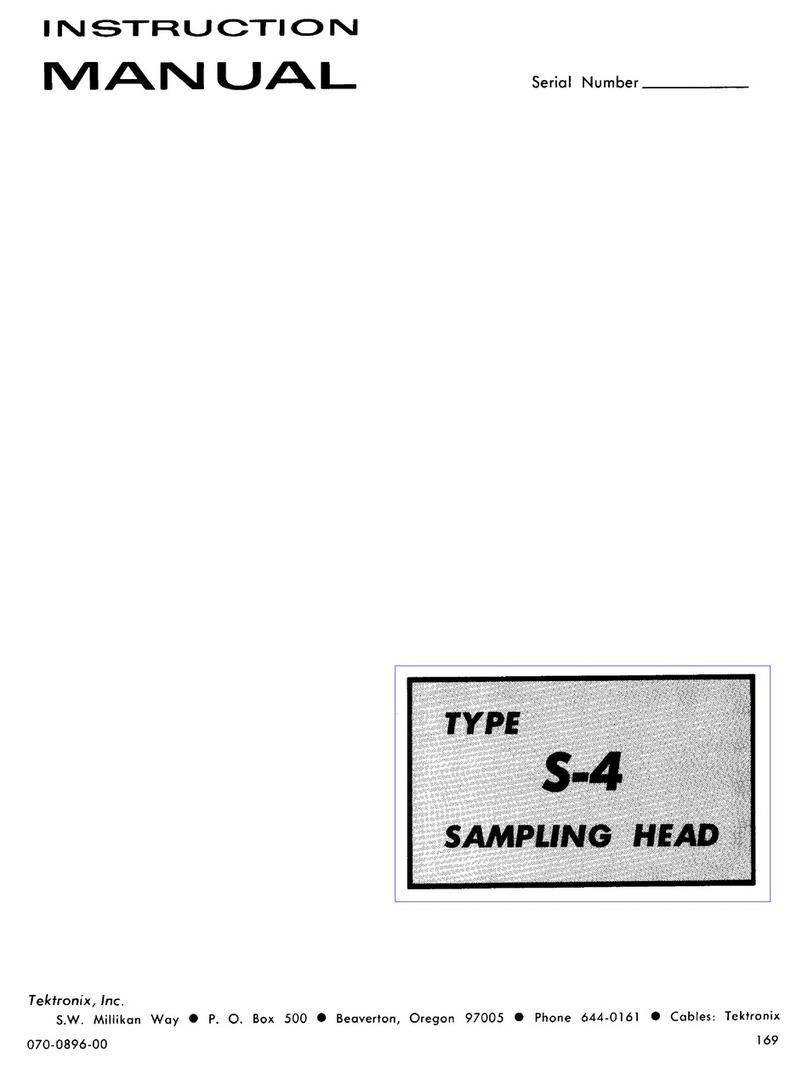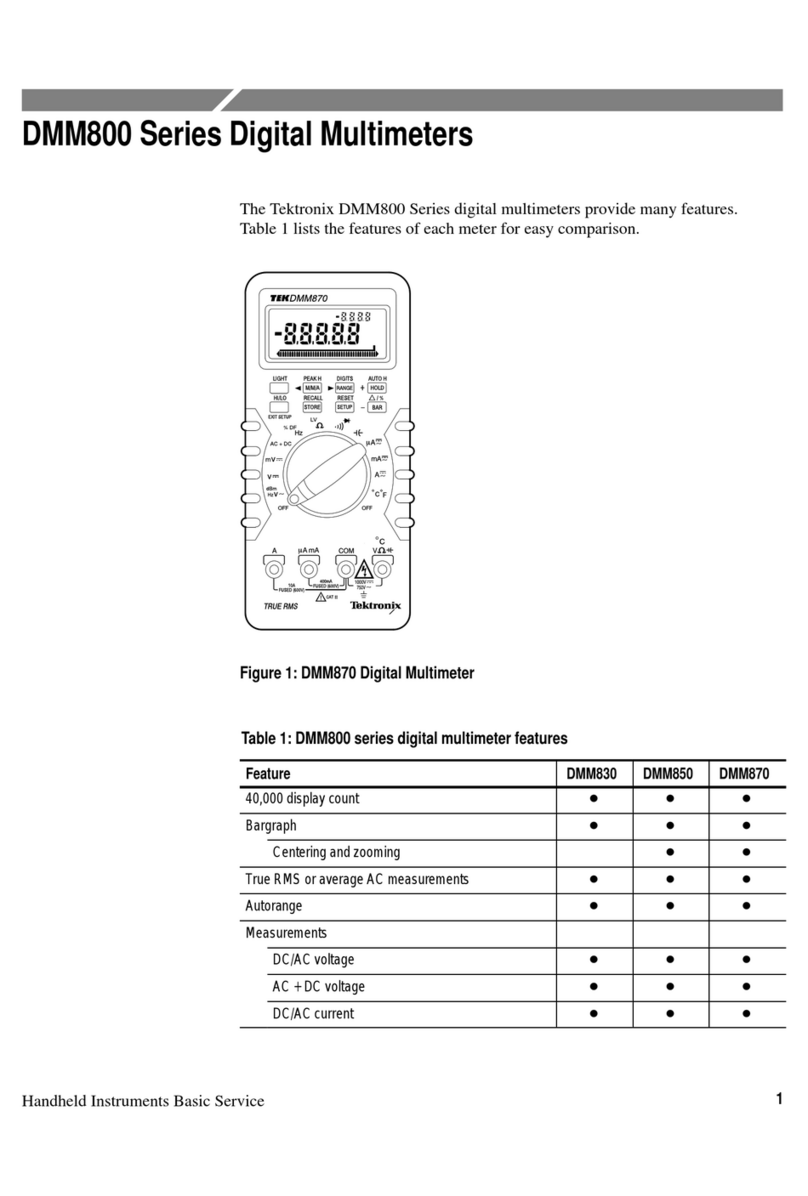
7L5 Service
TABLE
OF
CONTENTS
Page Page
SECTION 1 GENERAL INFORMATION SECTION 4 CALIBRATION PROCEDURE
Introduction and Description
1-1
Complete
or
Partial Calibration
4-1
Manual Organization 1-2 History Information
4-1
Electrical Characteristics 1-2 Interaction
4-1
Frequency 1-2 Equipment Required
4-1
Input
1-3 Short Form Procedure and Record 4-2
Amplitude 1-3 Preliminary Procedure 4-3
Sweep 1-4
1.
Check/Adjust the Reference
Output Connectors 1-4 Oscillator Frequency 4-6
Environmental Characteristics 1-5
2.
Check/Adjust the Calibrator
Physical Characteristics 1-5
Output
Level 4-6
Accessories and Options 1-5
3.
Frequency Span/Div Calibration 4-7
Installation 1-5
4.
Sweep Timing 4-9
Repackaging
for
Shipment 1-6
5.
1st LO and 1st LO Phase Lock
Calibration 4-10
SECTION 2 CIRCUIT DESCRIPTION
6.
Function IF Calibration
4-11
Block Diagrams
2-1
7.
Calibrate the
250
kHz, 2nd
IF Processing Chain
2-1
Mixer, and 10.7 MHz Input Filter 4-12
Sweep Control and Frequency
8.
Variable Resolution Calibration 4-13
Reference 2-2
9.
Digital Storage Calibration
Frequency Control Circuits 2-3 (SN B069999 and below) 4-16
Readout 2-5 9A. Digital Storage Calibration
Display Processing 2-6 (SN B070000 and up) 4-18
Detailed
Circuit
Description 2-7
Sweep Control 2-7 SECTION 5 MAINTENANCE
Trigger Logic and Sweep I
ntroduction
5-1
Control
2-11
Preventive Maintenance
Frequency Span and Readout 2-13
5-1
Tune Reference
+N
Loops 2-13 Cleaning
5-1
A&B Oscillator and Control 2-14 Lubrication 5-2
1st LO/1st LO Lock 2-15 Visual Inspection 5-2
Reference Level, Readout, and Transistor and Integrated
Timeslot 2-15
Circuit
Checks 5-2
Readout and Timeslot Decode 2-18 Troubleshooting 5-2
IF Processing Chain 2-19 Troubleshooting Aids 5-2
Variable Resolution 2-20 Finding Faulty Semiconductors 5-3
10
kHz &
30
kHz Filters and General Troubleshooting
Post
VR
Amplifier 2-22 Techniques 5-5
Corrective Maintenance 5-5
Log/Lin
Amplifier 2-22 Disassembly
of
the 7L5 and
Detector and Video Amplifier 2-22 Replacing Assemblies
Display Processing 2-23 5-7
Horizontal and Vertical Display Removing the Front Panel 5-7
Removing the IF Module
Processing 2-23 Assembly 5-7
Average Calculator (SN B069999 Removing the Sweep Board 5-8
and below) 2-24 Removing the
RF
Module 5-9
Digital Storage (SN B069999 Reassembling the 7L5 5-9
and below) 2-25
Digital Storage and Averaging Internal Operational Adjustments 5-9
(SN B070oo0 and up) 2-30 SECTION 6 OPTION INFORMATION
SECTION 3 PERFORMANCE CHECK
Introduction
3-1
SECTION 7 REPLACEABLE ELECTRICAL
Equipment Required
or
PARTS
Recommended
3-1
1.
Sweep Triggering 3-2 SECTION 8 DIAGRAMS AND CIRCUIT
2.
Dot Frequency Range and BOARD ILLUSTRATIONS
Accuracy 3-2
3.
Display Flatness 3-3 SECTION 9 REPLACEABLE MECHANICAL
4.
Frequency Span Accuracy & PARTS AND EXPLODED
Linearity 3-4 DRAWINGS
5.
Sweep Rate Accuracy 3-5 CHANGEINFORMATION
6.
Intermodulation Distortion 3-6
7.
Display Frequency St!ibility 3-7
REV.
A MAY 1978
Scans by ArtekMedia © 2008…..A.K.A….
7L5 Service
TABLE
OF
CONTENTS
Page Page
SECTION 1 GENERAL INFORMATION SECTION 4 CALIBRATION PROCEDURE
Introduction and Description
1-1
Complete
or
Partial Calibration
4-1
Manual Organization 1-2 History Information
4-1
Electrical Characteristics 1-2 Interaction
4-1
Frequency 1-2 Equipment Required
4-1
Input
1-3 Short Form Procedure and Record 4-2
Amplitude 1-3 Preliminary Procedure 4-3
Sweep 1-4
1.
Check/Adjust the Reference
Output Connectors 1-4 Oscillator Frequency 4-6
Environmental Characteristics 1-5
2.
Check/Adjust the Calibrator
Physical Characteristics 1-5
Output
Level 4-6
Accessories and Options 1-5
3.
Frequency Span/Div Calibration 4-7
Installation 1-5
4.
Sweep Timing 4-9
Repackaging
for
Shipment 1-6
5.
1st LO and 1st LO Phase Lock
Calibration 4-10
SECTION 2 CIRCUIT DESCRIPTION
6.
Function IF Calibration
4-11
Block Diagrams
2-1
7.
Calibrate the
250
kHz, 2nd
IF Processing Chain
2-1
Mixer, and 10.7 MHz Input Filter 4-12
Sweep Control and Frequency
8.
Variable Resolution Calibration 4-13
Reference 2-2
9.
Digital Storage Calibration
Frequency Control Circuits 2-3 (SN B069999 and below) 4-16
Readout 2-5 9A. Digital Storage Calibration
Display Processing 2-6 (SN B070000 and up) 4-18
Detailed
Circuit
Description 2-7
Sweep Control 2-7 SECTION 5 MAINTENANCE
Trigger Logic and Sweep Introduction
5-1
Control
2-11
Preventive Maintenance
Frequency Span and Readout 2-13
5-1
Tune Reference
+N
Loops 2-13 Cleaning
5-1
A&B Oscillator and Control 2-14 Lubrication 5-2
1st LO/1st LO Lock 2-15 Visual Inspection 5-2
Reference Level, Readout, and Transistor and Integrated
Timeslot 2-15
Circuit
Checks 5-2
Readout and Timeslot Decode 2-18 Troubleshooting 5-2
IF Processing Chain 2-19 Troubleshooting Aids 5-2
Variable Resolution 2-20 Finding Faulty Semiconductors 5-3
10
kHz &
30
kHz Filters and General Troubleshooting
Post
VR
Amplifier 2-22 Techniques 5-5
Corrective Maintenance 5-5
Log/Lin
Amplifier 2-22 Disassembly
of
the 7L5 and
Detector and Video Amplifier 2-22 Replacing Assemblies
Display Processing 2-23 5-7
Horizontal and Vertical Display Removing the Front Panel 5-7
Removing the IF Module
Processing 2-23 Assembly 5-7
Average Calculator (SN B069999 Removing the Sweep Board 5-8
and below) 2-24 Removing the
RF
Module 5-9
Digital Storage (SN B069999 Reassembling the 7L5 5-9
and below) 2-25
Digital Storage and Averaging Internal Operational Adjustments 5-9
(SN B070oo0 and up) 2-30 SECTION 6 OPTION INFORMATION
SECTION 3 PERFORMANCE CHECK
Introduction
3-1
SECTION 7 REPLACEABLE ELECTRICAL
Equipment Required
or
PARTS
Recommended
3-1
1.
Sweep Triggering 3-2 SECTION 8 DIAGRAMS AND CIRCUIT
2.
Dot Frequency Range and BOARD ILLUSTRATIONS
Accuracy 3-2
3.
Display Flatness 3-3 SECTION 9 REPLACEABLE MECHANICAL
4.
Frequency Span Accuracy & PARTS AND EXPLODED
Linearity 3-4 DRAWINGS
5.
Sweep Rate Accuracy 3-5 CHANGEINFORMATION
6.
Intermodulation Distortion 3-6
7.
Display Frequency St!ibility 3-7
REV.
A MAY 1978
